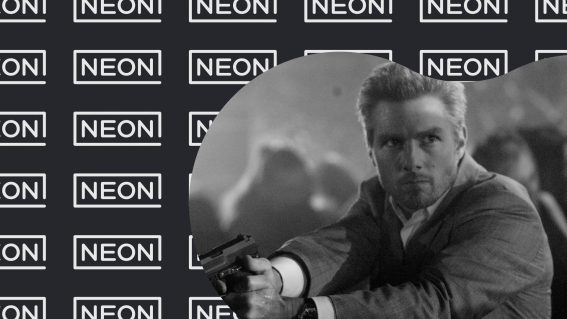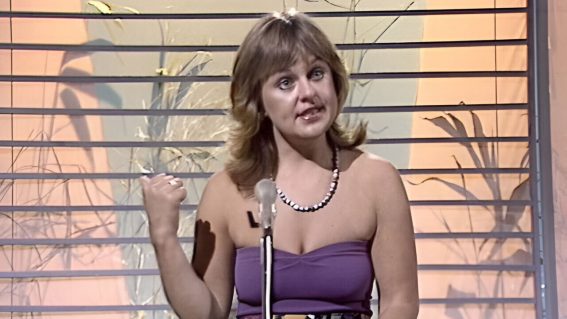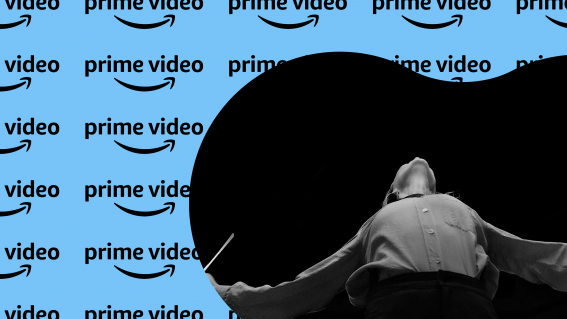YOUR CHILDHOOD: THE MOVIE
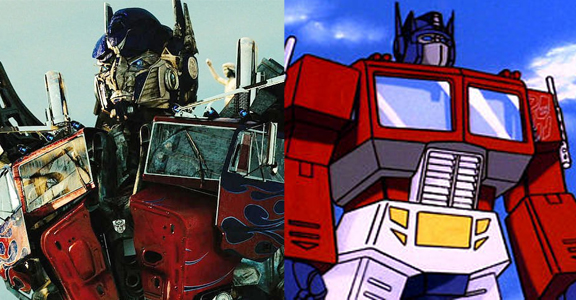
This one’s for all you out there who want to feel a bit nostalgic. Lots of video links within.
If there’s one thing that Hollywood has always been obsessed with, it’s the idea of taking something you love, repackaging/imagining it so it looks new/fresh/different/worth checking out and then selling it back to you for even more money than what you spent on the original thing in the first place. And while it isn’t the first to come up with this lucrative enterprise (that credit goes to playwrights and stage actors who would adapt famous works of literature for the theater) Hollywood, of course, has just taken that idea and cranked it up to eleven.
Literature was merely the first rung of the ladder and in our modern day world we’re beholden to film adaptations of our favourite TV shows, games and, of course, remakes of our favourite films in an attempt to squeeze one more drop of spendola from a seemingly long-retired idea or product. And one of the strangest, and most often misfired, sub-genres of adaptation has been the live-action adaptation of our favourite cartoons.
Theoretically, well…on paper anyways, our childhoods ought to be ripe harvesting grounds for creative entities looking to make a buck off us. Science suggests that for a developing human, it can take anywhere from 8-10 years to truly separate tangible reality from intangible fiction in a tangible medium and then yet another 10-20 years to put it all in context of the adult minds that created the fiction that you were weened upon as a young human. In that period of childhood (whether yours was great or awful), we attached genuine emotional dependency, hopes, dreams, fears and love to characters and creations that were no more animate nor alive than ink on a piece of paper, a pixel on a cathode ray tube or mere complex assembly of plastic. In short, you’re already deeply invested in things from your childhood in a way that they’re practically hardwired into your hindbrain – the things that gave you pleasure as a kid still shape, motivate and define you as a person to this day. So in theory, anything from your childhood that is repackaged for maximum nostalgic goodness and sold back to you at a price should hopefully be a raging success if it’s done right.
Or so that’s the theory.

80's kid cast of "Punky Brewster"
My childhood was the 1980’s. And like the three decades prior, it was an amazing time to be a kid. For one thing, 80’s kids today don’t have to feel embarrassed about 80’s fashion because a) it was probably not your choice to wear half the strange stuff you did and b) you were a kid, so you looked cool in them then and now. Secondly, in the decade of wanton consumerism, 80’s kids had all the coolest toys: we saw the birth of the home video game console (coupled with the unprecedented and delicious joy of playing cabinet/cocktail-table games at your local video arcade), birth of the home video market (your favourite movies on blurry, pan-and-scan, VHS cassettes), birth of the portable music device (Walkmans!), a quantum leap forward in the toy markets for games, action figures, dolls and other things like BMX bikes, skateboards, water and nerf guns and even the start of the home computing era. In some places it was still safe to leave your front door unlocked, the movie industry was focused on kids and young teens and were often thematically anchored in the promise of a world of magic, possibility and escapism in the great beyond and the love and reliance of family and togetherness. Star Wars hadn’t been ruined, Spielberg was a God, horror movies were about scary monsters and Saturday Morning Cartoons gave children all over America (and in many parts of the world) the feeling that they were the center of all attention.
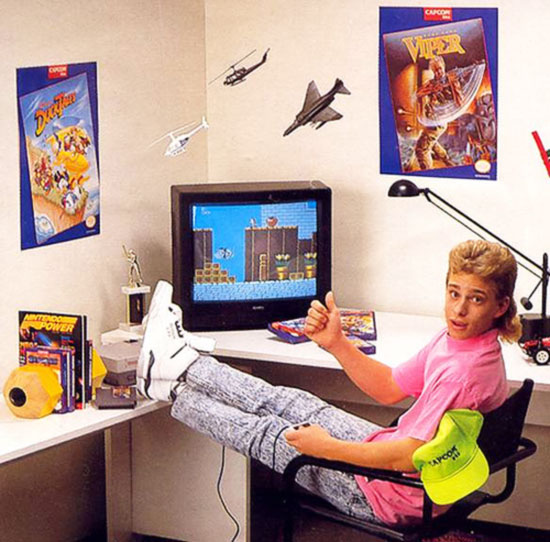
Scary is it may seem, this kid could've been the coolest dude in school.
Cartoons dominated the 1980’s child experience like almost nothing else. Not since the heyday of Walt Disney’s animated shorts and features at the cinemas of the 1930’s – 1950’s had animation been on that much of a forefront and it was this new period of interest in the artform that sparked the cartoon renaissance that we’re still in to this day. And while it was mostly the stuff of schoolyard and Saturday morning discussion, kids all over the world wondered what would happen if cartoons were made into live-action films. And eventually, many of those kids grew up and started to genuinely try and make those childhood conversations into a reality.
Movies-Based-On-Cartoons have had a very troubling history of success and sit, mostly, side-by-side with that other tried-but-almost-always-failed subgenre: the Video-Game-Movie (the subject of, thankfully, a later blog post). So far in cinema history, we’ve been beleaguered with a host of really strange and oddball live-action adaptations of cartoons. One such film was even attempted in the 80’s by that great Italian B-movie mogul Dino De Laurentiis who teamed up with the rag-tag team of Dolph Lundgren, Frank Langella and a pre-famous Courtney Cox to produce Masters Of The Universe, a low-budget, Star Wars-ian (everything was Star Wars-ian in the 80’s) reimagining of the popular filmation cartoon He-Man & The Masters Of The Universe.
The critical and box-office failure of the Masters Of The Universe movie (unsurprising considering it’s Earth setting strips much of the film’s other-worldy charm) didn’t stop others from trying with varied results. One cannot forget that other, really weird, 80’s cartoon adaptation by reknowned filmmaker Robert Altman and starring Robin Williams: Popeye The Movie (trailer behind the link).
Then the 1990’s brought us such adaptations as Richie Rich, The Flintstones, Mr Magoo and Inspector Gadget…all financially in the green though all mostly unwatchable to boot. The terrible 2000’s, of course, has unleashed the floodgates on cartoon adaptations with serving after serving of painful, brightly-colored, saccharine displays of below-the-belt punching and actors embarrassing themselves for huge paycheques. Films like Scooby Doo, Fat Albert, Dragon Ball, Garfield, Yogi Bear and Speed Racer were all met with mixed levels of success and failure (some like Scooby Doo and Fat Albert at least were smart enough to self-parody relentlessly while Speed Racer just blew its wad on unrestrained self-indulgence like a fiery sports car, driven by a rabid chimp, shooting explosives out of its exhaust while careening over a cliff and screaming “I regret nothing!”). And of course the film that, lately, feels like it was created personally to haunt every waking step I take on this planet: Michael Bay’s horrific Transformers trilogy, crafted by firehose of money so monumentus that it spawned other tacky, big-budget, cartoon adaptations like the totally-missed-the-point G.I. Joe movie, Shyamalan’s dull adaptation of The Last Airbender, the insufferable Jason-Lee’s-Gotta-Eat duology of Alvin & The Chipmunks and the recent upcoming Smurfs live-action film.

Neil Patrick Harris gotta eat!
All in all, it seems that – whether or not you’re a fan of the “Bayformers” trilogy – cartoon adaptations to live-action seem more likely to fail than not. Though it is curious to note that, The Last Airbender and G.I. Joe aside (one helmed by a director whom half the world loves to hate, the other helmed by a confirmed and long-standing Hollywood hack), most of the films are based on cartoons that are not exactly dripping with prime-cut choices of story-meat that are ideal for the live-action treatment. I mean if you’re going to turn a cartoon into a movie, you probably wouldn’t want to pick the cartoon about the talking grizzly bears or lasagne-eating cat or the world’s richest kid…but despite that, Hollywood did. The reasoning is obvious – these characters are long-standing and have a fan-base that spans generations and if you’re going to make a franchise movie then simple Hollywood bean-counting would force you to pick the cartoon that has the most number of fans overall instead of the cartoon that actually would make a decent movie to begin with.
Consider, for a moment, the other side of this coin. The new era of cartoons that was the 80’s and 90’s spawned a host of shows based off live-action movies (some even R-rated films) which, on average, did better business than their cartoon-to-live-action-movie cousins. While there were servings of cartoon dreck like the guise of shows like Back To The Future, Highlander, Police Academy, Teen Wolf, Ace Venture: Pet Detective, Rambo: The Force Of Freedom and Godzilla, some of the best children’s animated shows of the 80’s and 90’s were also movie-adaptations such as the jaw-droppingly awesome Batman Animated…
…the beautifully executed (and genuinely frightening) The Real Ghostbusters…
…the kooky and zany Beetlejuice and other highlights like the leap-off-the-comic-pages Ruby Spears Superman show, RoboCop, The Karate Kid, the two surprisingly decent Star Wars cartoons: Ewoks and Droids, Bill & Ted’s Excellent Adventures and the infinitely-superior-to-the-actual-movies Men In Black.
Why did this stuff work? Simply because the style of 80’s animation was to mimic and expand on what people were seeing in live-action TV and films at the time. While the cartoons of today are mostly comedy based and often quite abstract and zany and cartoons of the 90’s were mostly based around kids (Doug, Hey Arnold, Rugrats or Wild Thornberries) and/or the day-to-day ins-and-outs of childlike characters (The Angry Beavers, Two Stupid Dogs, Rocko’s Modern Life, Ren & Stimpy, etc), the cartoons of the 1980’s were about adults (often characters in their 30’s) and about high-flying, Hollywood-style action and adventure. So turning high-flying adventure films into cartoons made sense and, in a way, perhaps this is where Hollywood is constantly getting it wrong?
Perhaps instead of adapting cartoons based on a possible number of audience members who are likely to know the characters, Hollywood might want to take a stab at adapting cartoons that actually would make good films? For the last part of this entry, I’d like to present my top nine (I couldn’t find ten, no seriously!) picks of cartoons that could possibly make great live-action films if done correctly. Let’s take a gander and see if you agree with me:
CENTURIONS
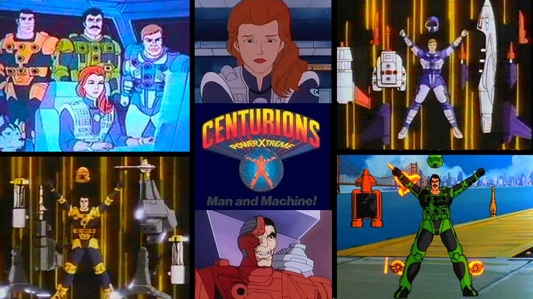
Coming in at number nine, the awesome Ruby Spears created military-tech show Centurions is an easy choice. As the show’s awesome opening sequence explains, our heroes are three stalwart, globe-trotting, members of a security team who combat the forces of evil (led by robot-army-controlling, half cyborg, terrorist “Doc Terror”) by having different configurations of combat-gear exo-suits beamed down to them, anywhere in the world, from a satellite facility called Skyvault. Each hero specializes either in air, sea or land combat and is a veritable one-man-army capable of fighting hundreds of robotic enemies simultaneously.
HOW IT COULD BE DONE: This show is any tech-loving, sploshun-seeking, action fan’s wet dream if it was handled properly. The film would have to be about the hardware and certainly would blow the creative horizon wide open by the variety of weapon-systems (and subsequent hard-action sequences) each of the trio (or more if you wanted to expand the team) could carry and utilize to save the world. Granted, this concept has already been attempted in the award-winning and mega-expensive live-action 80’s kids show Captain Power & The Soldiers Of The Future which stole the Centurions-concept (including the Doc Terror character) and collided it with James Cameron’s Terminator universe. But I think the success of that short-lived TV show serves as an example of how well the concept could work as a feature film. MAN AND MACHINE! POWER EXTREME!
SILVERHAWKS

At number eight, if you remember the 1980’s then you probably remember the show Thundercats. My understanding is that here, in NZ, it was subject to some controversy about its violence content though in the US it was remembered mostly for being a very addictive show that garnered a large fanbase. Silverhawks was a “recycle-the-same-concept” show created by the makers of Thundercats after that show was finished. While it did spawn a huge fanbase (especially today on the Internet), the series didn’t last the distance as Thundercats due to the fact that it wasn’t as well written or executed. The show revolves around a team of avian-motif designed bionic policemen who battle an escaped, part-supernatural space criminal called Mon Star (similar to the Thundercats villain Mumm-Ra), all set in a high-fantasy-meets-Heavy-Metal-esque distant galaxy.
HOW IT COULD BE DONE: After reading the above synopsis and watching the show’s very cool opening sequence and catchy theme song, you’d be forgiven for thinking this some kind of 1970’s prog-rock album cover art sprung to life and then ponder how on earth this could make a good movie. And I’m not saying it would be easy granted that you’d have the same problems as doing a Thundercats film (which I personally think would be far less interesting), but Silverhawks as a base concept and setting could open the door for a very adventurous and aesthetically edgy science fiction movie. If you’re the sort of person who complains that sci-fi and fantasy doesn’t think outside the box enough then Silverhawks creates a platform where things could become very interesting and different from your usual fair (no matter how dull the actual show was…we’ll make sure the writing aims for loftier targets than the cartoon did). Think The Adventures of Buckaroo Banzai. Think the beautiful Asgard sequences in the recent Thor film. Think Tarsem Singh’s The Immortals in space…and there you might find room for the Silverhawks.
THUNDAAR THE BARBARIAN

Number seven! Take Robert E. Howard’s Conan The Barbarian, the design and stories of Heavy Metal magazine and three lead characters who suspiciously resemble certain heroes from a George Lucas sci-fi movie made in 1977 and you end up with Thundarr The Barbarian, a rip-roaring, imaginative and sometimes edgy Ruby-Spears cartoon from 1980. As the show’s opening sequence explains, Thundaar is set in the Earth of a distant future where a cataclysm has thrown civilization back into the Dark Ages, but horrifically fused with science-gone-amok, mutants, monsters and good lashings of black magic. Out of the wilderness comes our hero Thundarr, armed with his lightsaber-*cough*-I mean ‘Sun Sword’ and with his companions the wizard Princess Ariel and shameless Wookie-ripoff Ookla The Mok, to vanquish evil and protect the innocent all the while searching for awesome piles of loot.
HOW IT COULD BE DONE: Let’s face it, despite the *cough*-Golden Era of sword-and-titties Italian Barbarian films, spawned by John Milius’ under-appreciated (but also under-funded) cinematic adaptation of Conan The Barbarian, we’ve really not seen the high-fantasy-barbarian genre realized all too well in cinema. And while the PG-raged sequel Conan The Destroyer had elements of what Robert E. Howard and Marvel comics fans hankered for, the latest remake of Conan all, but proves that people preconceptions of what makes a good fantasy-barbarian film almost always falls short. Thundaar could be a vehicle that merits re-exploring this genre, especially with its wonderfully Heavy-Metal-magazine-esque collision of dark fantasy, monsters, high-tech science and post-apocalyptic setting. If there ever was a franchise that left the door wide open for someone to be bold, daring and brazenly unforgiving in R-rated dark fantasy that could make Ralph Bakshi and Boris Vallejo blush, this could be it. And of course, the Han Solo/Princess Leia/Chewbacca chemistry certainly has been proven to work in the past. Of course, knowing our luck, Hollywood would just get it wrong anyways.
VOLTRON: DEFENDER OF THE UNIVERSE (Vehicle Version)

Number six! Hah! I bet some of you are scratching your heads at this! That’s right, there were not one, but three different incarnations of everyone’s favourite gestalt-bot: Voltron – Defender Of The Universe. The original show was based on a Japanese TV show called Go-Lion and gave us the famous Lion Voltron which most people have seen. The Vehicle-Voltron show, based on the Japanese show Armored Fleet Dairugger XV received less airtime and the third Gladiator-Voltron was hardly seen by anyone outside of Japan. Most fans of the Lion-Voltron really don’t care for the other versions and that’s fine; nostalgia counts for a lot when it comes to your favourite childhood TV shows. But the reality is that Lion-Voltron does not/will not make for a good film.
Why?
Are you kidding? IT’S FIVE CAT ROBOTS THAT TURN INTO A HUMAN ROBOT. It makes no fucking sense! I mean exactly how much sugar did people sprinkle into their cereal everyday in order to start to think that a bunch of lions that join together into a super-robot is remotely sensible? Sure, I can respect that there’s kids (who weren’t me) who think lions that turn into robots are cool, but from a pure design perspective it’s an utterly laughable idea. Voltron doesn’t even have any fingers thanks to this ludicrous design flaw, let alone the fact that having five lion robots serves absolutely no combat or design advantage. Add to that the fact that it fights evil ‘robeasts’ made out of magic by an evil space witch and things just get stupid pretty quick. Even the conceptual design drawings from the recently scrapped live-action film attempt looks utterly ridiculous!
HOW IT COULD BE DONE: Vehicle-Voltron was a different beast entirely and one that was founded on attempting to tell an ongoing story with genuine emotional stakes and continuity. The concept is pretty sound and a film wouldn’t have to drift far from the basic structure of the show which featured a cast of 15 pilots split into land, air and sea-teams and the Voltron robot used as a defense weapon to protect a fleet of spaceships desperately searching to find a planet suitable for human colonization. At the same time, Earth is war with the Drule Empire; a race of purple-skinned humanoid aliens who have an army of ‘robeast’ monsters at their command. Vehicle-Voltron was an ongoing serial-style show where characters grew, had relationships, sometimes died and the plot developed with them. The show even gives a reason as to why the team are reluctant to form their deus-ex-machina titular robot to save the day: Voltron only has 90 seconds of power before it shuts down, a design flaw not ratified by the robot’s mysterious alien creators. All this and one famous sequence where Voltron’s blazing sword weapon slices Drule starships in half pretty much sold me on why this was the best incarnation of the series.
SHE RA: PRINCESS OF POWER

Number five and, as some of you may already know, He-Man & The Masters Of The Universe was a show created for toymaker Mattel for their “He-Man” toy line which they created after the action-figure boom post-release of Star Wars (for which Mattel passed on and spent the next thirty years kicking themselves for). The success of the show and the toys led them into finding a halfway crossover point between their He-Man line and their Barbie range which led them to create She-Ra: Princess of Power. A show was commissioned and, as its almost identical-to-He-Man opening sequence explains, sets up She-Ra as He-Man’s twin sister, stolen from birth and left in an alternate world known as Etheria. The setup is almost the same, except that She-Ra/Princess Adora is a general in the Great Rebellion who are fighting the evil forces of The Horde: an alien Harkonnen-esque empire that has taken over the planet and enslaved its inhabitants.
HOW IT COULD BE DONE: I know what you’re thinking; the He-Man movie was such a disappointing fiasco already, how could a hearts-and-unicorns She-Ra film possibly work? Girls have it rough when it comes to toys and TV shows: corporates want young females to play with dolls, fluffy animals and simulated consumerism while boys have to play with guns, vehicles and bare-chested heroes. And in the 80’s, when the most girls had were shows like Strawberry Shortcake (based on dolls), Care Bears (based on greeting card characters and most of the characters were male incidentally) and My Little Pony (no, not the new Bronie-endorsed show. The OLD show), She-Ra defied the odds by never-wavering from the heroic formula set by the Masters Of The Universe show, even if it had to placate Mattel with its art-department choices that turned the land of Etheria into Barbie’s Outer-Space Getaway Vacation Playset. None-the-less, She-Ra has all the right elements for a great film franchise if it could be distilled through the pours of a more story-saavy film creative: a genuinely tough and independent, but distinctly female, hero, a rogue’s gallery of terrifying villains, a cause to free a planet from enslavement and a high-brow mix of sword, sorcery and sci-fi that has already been proven to be effective (see the awesome Asgard sequences in Thor). She-Ra even had the distinction of being a rare, female-focused, 1980’s show that doesn’t just pass the Bechdel Test, it blows it out of the water. And if that doesn’t convince you, check out this piece of conceptual fan-art and tell me if suddenly this character seems a lot more viable than its cartoon and toy origins belie?
As for the failure of the Masters Of The Universe film? Hey, it was made by Dino De Laurentiis! You do a deal with the Devil, don’t be surprised if you get burned. For my part, I thought the Eternia sequences were fine and opening the movie with Skeletor already conquering Castle Grayskull? Genius. It was all downhill from there.
BRAVESTARR

Number four and yet another gem from the very cool cats at Filmation: Bravestarr falls into a surprisingly popular sub-genre for 80’s cartoons: the Space Western. There were a plethora of these, the most popular ones being the bombastic, Power Rangers-esque Saber Rider & The Star Sheriffs, the surprisingly deep and emotional The Adventures Of The Galaxy Rangers and Bravestarr. The difference with Bravestarr was its almost steampunk-esque setting on the planet New Texas where 19th Century aesthetics meets distant future tech and the towns are patrolled by a He-Man-esque Marshall Bravestarr: a Native American (!!) lawman who can summon ancient animal spirits of a hawk, a puma, a wolf and a bear which would supernaturally accelerate his abilities. He fights a black-magic wielding outlaw named Tex Hex and his mystical spirit master, an entity known as Stampede who manifests in the shape of a bull’s skull. Marshall Bravestarr is aided by Thirty/Thirty, a talking cyborg horse that can become bipedal and wield a shotgun and J.B. a female judge who runs the local mining town and wields a mean cybernetic hammer of destruction to boot!
HOW IT COULD BE DONE: Move the hell over Cowboys & Aliens and Serenity, this is what a real Space Western could be if it was handled right. While Bravestarr wasn’t the best written of the Space Western cartoons, it delivers some of the most immediate and tangible design and back-story choices that could, again lending the feel of Heavy Metal comics, be a memorable and strong science-fiction adventure with room to borrow/be inspired by some of the great classic Western feature films of our time. Apart from the fact that it’d be awesome to FINALLY have a Native American action hero and the exotic sci-fi locales with the touch of mysticism that underlines the original show, the opportunity to do a sci-fi film with the feel of a Leone or Eastwood film could be too much of a good thing (and hence why nobody will ever probably try). Science-fiction needs to stretch itself and shows like Silverhawks or Bravestarr could be just the ticket to do this!
JEM

Number three and this one I think most people will remember: Jem was a show commissioned by Hasbro to support a new line of glam rock dolls for girls, but the popularity of the show overtook the toy line and the rest is 80’s cartoon history. Like many of the best shows, Jem had a staff of notable writers from the comic book and literary world who imbued the, otherwise somewhat ridiculous, concept with dynamic characters and edgy positive messages for children (for it’s time) and, believe it or not, the show had a large following with young males as well as females. The show follows the adventures of Jerrica Benton who has inherited her father’s multi-national mega-music label Starlight Music and “Synergy” – an audio/visual synthesizing computer which uses holographic technology to transform Jerrica and her friends into Jem & The Holograms, one of the world’s most famous (and mysterious) glam rock bands. Jem and her bandmates raise money to operate a foster program for troubled girls, all the while fending off rival bands The Misfits (no relation to the real band) and The Stingers who are trying to knock them off the charts and find out Jem’s real identity. The show was also notable for including specially created music videos and songs for the show within the actual episodes; turning the show into a genuine pop music phenomenon.
HOW IT COULD BE DONE: Alright, I admit it I don’t really have an angle on this. The age where pop stars were mysterious magical creatures that could genuinely engage in high flying adventures has long passed and that angle was vital to the success of the original show. But dammit, Jem & The Holograms are definitely characters with audience investment and if they can make a freaking Rocky & Bullwinkle movie then they can somehow figure out how to make a Jem film. YOU HEAR ME?! DO YOU?!? THERE’S ONLY SO MUCH CRAP YOU CAN RECYCLE AT US BEFORE YOU HAVE TO LOOK TO ATTEMPT THIS!! WE’RE WAITING!!
GARGOYLES
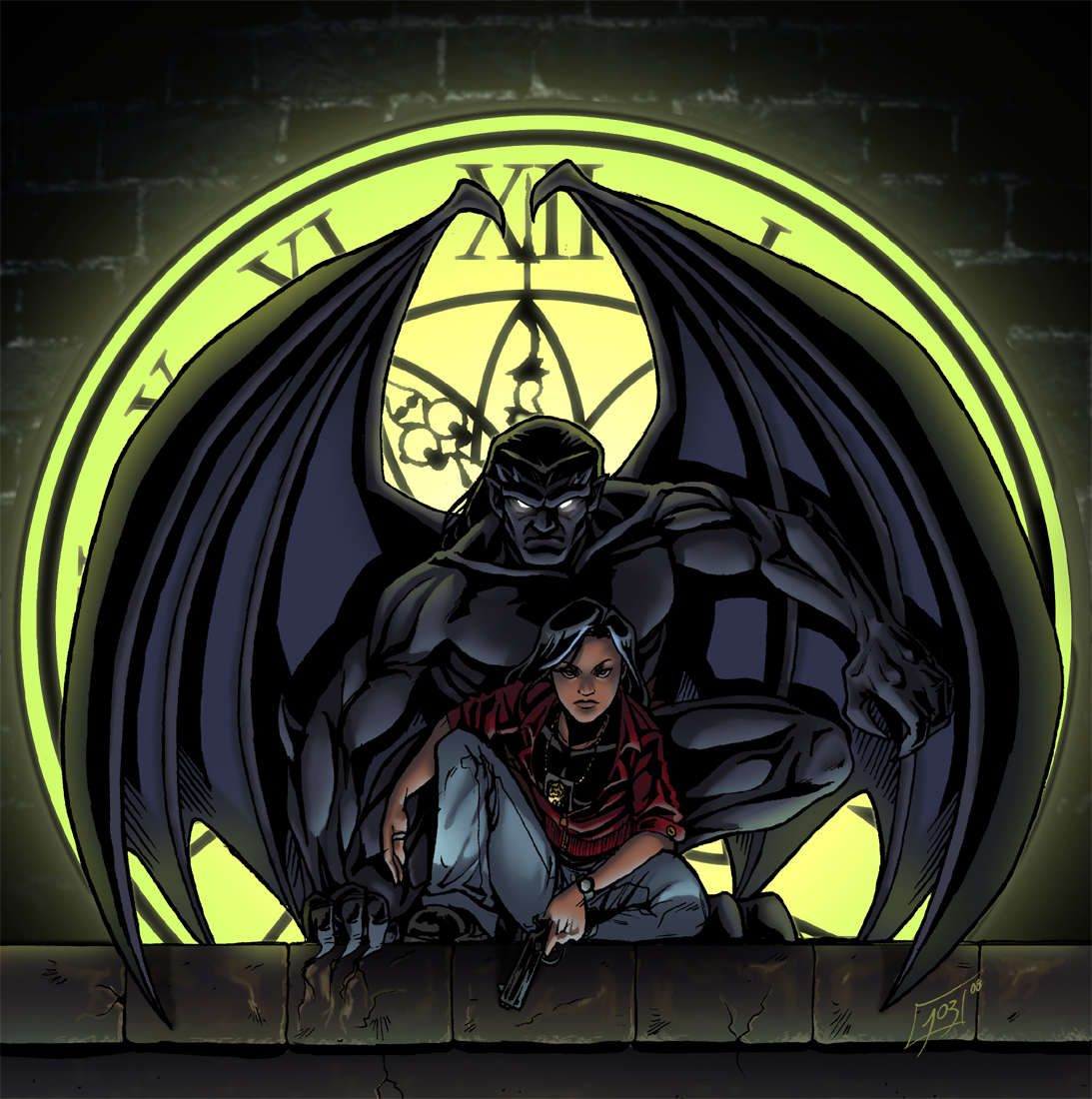
Number two and you can’t swing a dead cat in a room of thirty-somethings without hitting someone who will bemoan about how NZ television treated this show. Along with Batman Animated and the Spawn animated show on HBO, the early 1990’s was an attempt to move the tradition of American animation towards an adult audience and Gargoyles was one such attempt to ‘spice’ things up with very complex (I’m talking cable TV drama show complex) storylines, deep characterizations, a serialized format and slightly cranked up violence that showed punches and kicks connecting with opponents. Although Batman also did this, in NZ Gargoyles was heavily edited and then ultimately banished from TV altogether and leaving some very angry kids and teens who never got to find out how it all ended. This show was a favourite wherever it played; dealing with the story of gargoyle creatures resurrected from stone into the 21st Century where they are used as pawns in a high-stakes game of corporate and political chess that also involves time-travel, Arthurian mysticism and good old bat-winged crime-fighting.
HOW IT COULD BE DONE: Talk to any fan of the series and they’ll tell it to you straight: just take the big story arcs from the show and turn them into a film franchise. Done and dusted. A Gargoyles movie could be a fascinating merger of the Gothic supernatural and a superhero genre, perhaps in the guise of films like The Crow or the Tim Burton Batman films. And given that all of your heroes are fantastical creatures, you can be sure the FX budget would be pretty steep as would the cost of action sequences and set-pieces as the story switches between modern day and the Dark Ages in classic Highlander fashion. Gargoyles doesn’t require too much dilution; the story is already in the show…just take it and run!
ROBOTECH: THE MACROSS SAGA

And the number one 80’s cartoon sensation that desperately needs to be given the live-action treatment? Robo-freakin’-Tech mofos! This show was the shit back in the day (and still packs a wallop almost 30 years later); an American English translated (and heavily rewritten) adaptation of the hit Japanese anime Super Dimensional Fortress Macross, Robotech was an EPIC project by Japanime importers Harmony Gold and producer Carl Macek and it’s success and influence cannot truly be mapped out even today.
Because of minimum episode requirements for syndication, the Robotech project was to take three unrelated Japanime shows and, through the English translation process and a bit of editing, combined them into one show. The results were not all that good and the 2nd and 3rd parts of the series – Robotech: The Masters and Robotech: The New Generation – were pretty crap…but the original 36 episode arc Robotech: The Macross Saga was a masterpiece of storytelling and children’s entertainment. The show was an ensemble-cast epic (like your average HBO or AMC show today) set in the early 21st Century where a massive alien spacecraft crashes into earth and its arrival causes humanity to cease all internal hostilities and prepare for a potential war with alien invaders. When the very hostile and war-like aliens – The Zentradi – eventually arrive ten years later, they are revealed to be 50-foot tall humanoid giants who want to destroy the Earth and reclaim the spacecraft which holds the secrets for a superweapon. Fortunately humanity is ready for them: they’ve spent the past decade building a space fleet of aircraft carriers and jets that can transform into mecha-robots in order to fight the Zentradi hand-to-hand. The show then examines the lives of many characters caught up in this war, focusing strongly on a young talented pilot Rick Hunter and his particularly vicious love/hate triangle with a pop star named Lynn Minmay and Rick’s commanding officer Lisa Hayes. The show dealt (very discreetly) with highly mature content, complex storytelling, edgy character development and jaw-dropping animation for it’s time. Imagine you were flicking channels on a weekday afternoon between reruns of Rainbow Brite or The Smurfs and suddenly you see THIS on the screen:
Even the opening sequence told you, right up front, you were about to experience something of such unbelievable badassery that you probably needed to build a pillow-fort in your living room just to watch it through!
HOW IT COULD BE DONE: Because of its Japanese origins, this show pulled no punches on kids: characters developed with each episode, sometimes falling in love, sometimes breaking up with each other, sometimes getting hitched, often changing sides and betraying their friends and a lot of the time dropping dead like flies. The show depicts the genocide and total destruction of planet Earth and ends with a climactic battle the likes of which has never been realized in cinema, not even in the Star Wars films.
The advent of such giant robot films as Transformers and the upcoming Evangelion-rip-off Pacific Rim are mere precursors to the possibilities that Robotech could offer, especially with its in-built international audience AND its Japanese audience who’d turn up to the film anyway even if they knew it wasn’t really anything like the original Macross show. Even the show’s art design aesthetic is as edgy and dynamic (perhaps more so) than what we see in Hollywood blockbusters today and the original 35-part Macross Saga contains enough story material to make a trilogy or larger franchise with cliffhangers that would probably drive audiences crazy to the point of watching the original show to find out what happens next.
The bad news is that Robotech is already in development with Sylvain White, director of the lackluster The Losers at the helm. If we’re lucky, the project will die in development until someone with more clout and artistic nuance can helm the project and, make no mistake, a Robotech film would break the event horizon of visual effects in ways that haven’t been seen since the likes of Avatar, Lord of the Ring‘s Gollum and the dinosaurs in Jurassic Park. To do it justice, you can’t make this some flash-in-the-pan weekend smash-and-grab, but an event film that would dwarf Michael Bay’s next monstrosity in terms of scale and advertising push.
What are your thoughts on my top ten and do you think there’s a show that I’ve missed that should be included?
Thanks for reading!







